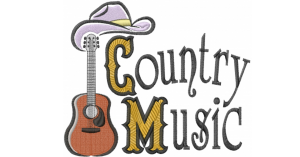
Today’s InsideRadio has published results from a Coleman Insights study into listening preferences of country music listeners. Recently, there has been much focus on the lack of airplay female country artists have received by radio over the past 20 years. The music industry & radio programmers have started responding to the complaints regarding this gender imbalance in country radio. Many years ago, this wasn’t an issue & the genre was happy to add as many women singers & players as quality record/CD releases would allow for. The study, from Coleman Insights and commissioned by CMT, reveals that 84% of listeners want equivalent play for women on radio and seven out of ten want more female artists in the overall genre. The study, which marks the official kick-off of the CMT Equal Play campaign, shows that country radio listeners are aware that male artists get more airplay than female country artists, with 72% of participants saying they hear more songs by male artists than female artists on country radio. Additionally, 53% say they have no gender preference when it comes to country artists. Listeners reported they would seek out country radio more if women were specifically highlighted, with 28% saying they would listen to radio more if additional female artists were featured, versus 11% who would listen less. Recently, a number of syndicated weekly country shows have vowed to add more female country artists to their playlists & individual stations & programmers are also slowly coming on board.

Another recent study by University of Ottawa professor Jada Watson has also revealed similar findings. She discovered the gap widening with each progressive year. Watson says in the study, first reported by Billboard, that given these statistics, “it would be entirely possible that a station’s listeners could commute to or from work and not hear a single song – let alone a current song – by a woman.” “While there is slight improvement in spins for songs by women in the evening and overnight dayparts, these are times of day with the smallest listening audience and fewer opportunities for new and established artists to expand their reach with listeners,” Watson writes. She also notes: “To work toward measurable change, these issues need to be addressed and actions taken through an all-in approach by industry leaders at radio, labels, management and touring agencies, publicists, and professional associations. These entities share a responsibility to reflect on the results presented here.” Watson concludes, “These solutions are not hard, but they do require significant change. They require industry leaders to make public acknowledgements and commitments, develop action plans and set benchmarks for accountability. The industry’s decisions moving forward should reflect and represent its diverse and growing audience. The future of country music can be one of inclusion and opportunity for all.”

Some comments may be held for moderation. (New users)